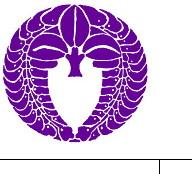 |
 |
 |
 |
 |
What is Ishi Yama Ryu? Ishi Yama Ryu (stone-mountain school) is a school of dynamic Japanese-style swordsmanship founded by Russel McCartney Sensei. It is characterized by being the only style of swordsmanship that addresses dynamic technique in multiple attack and directions in the flow of movement. The highest level of this practice is tameshigiri (target test cutting) where the swordsman cuts multiple targets in multiple directions in the flow of movement with a symbiosis of mind body breath and instrument. Our motto for Ishi Yama Ryu: Shu Mamoru -- to defend, protect, keep, observe, obey, abide by, stick by, and be true to the teacher, the school, its members and ourselves. Why training with the sword is so important: It is an instrument of great beauty, as well as a weapon in striking down oppressors, thereby giving life to those who are oppressed. Because the training leads to the use of real swords, this art form requires the most sincere training. The power of focus and concentration must be developed to the fullest to maintain safety. This is a universal truth applicable to all situations. This also relates to katsujinken--the sword that gives life. As we practice we must envision those things which keep us from performing at our optimum, i.e. greed, fear, ego, envy, jealousy . . . whatever holds us back. These things are visualized as the target in front of us and cutting through those things leads us to a stronger sense of self, of who we are.This is a practice which ultimately rids us of self deception, building spiritual strength. Anzen dai ichi: This means safety first. This thought must be with us always in sword class and with our training partners in Aikijutsu, as well as outside the school in our daily lives. As focus and concentration improves, we are placed more closely to our inner selves. This harmony -- achieved of mind and body -- expands to harmony and awareness with our environment. - Sensei Russell McCartney The Style of Ishi Yama Ryu Some "Japanese" systems do have certain spiritual practices that are requirements of the training. In Yagyu Shinkage Ryu for one example, there is a long list of precepts that work in conjunction with the technical practice that moves the practitioner toward a better outlook on and participation of living ones life. In IYR the practice can enrich the connection with ones spiritual self as well. In this way there are also some principles used as guides to enrich and balance ones life. The sword is after all a metaphor for life. The way one practices their swordsmanship (their unique representation of it) is usually associated with some level of their consciousness. When a strong connection is achieved between the technical, physical, spiritual, mental and visual, in that order, referred to as the 'Unified Movement Principle'. It is the balanced unification of mind, body, breath, and instrument, also in this specific order. For those of you who are paying attention you will notice that both descriptions has an opposite order for each explanation of the same thing. This is one of those phenomena where two opposite equally correct approaches describe the same thing. This quite often is a positive indicator of good balance in principle and technique if conflicting descriptions and methods balance in the final analysis of whether the techniques and strategy works or not. IYRB is specifically designed for multiple encounter/attack/defend situations and as such is the only Japanese 'style type' that does so with consistent predictable results. Ultimately in the final analysis and highest level of performance, there is no difference in its execution that separates it from kata, tameshigiri, sparring or combat. Though there are of course only eight basic cuts and five basic attitudes positions in any Japanese based style, these combinations produce innumerable variables that make up the vast amount of Japanese based technique in the world today. Of those of Japanese origin only two to three or at most four are typically used in any kata sequence. And of that vast number of representations there are precious few that are combatively practical and fewer still that can cut a simple target at the same time much less those that can make it happen in the flow of movement. The flow and multidirectional aspect of the IYRB advanced forms are therefore unique in its approach to the sword arts. Why a Course Approach To "Begining" Technique
Works Course One: Course Two: Course Three:
|